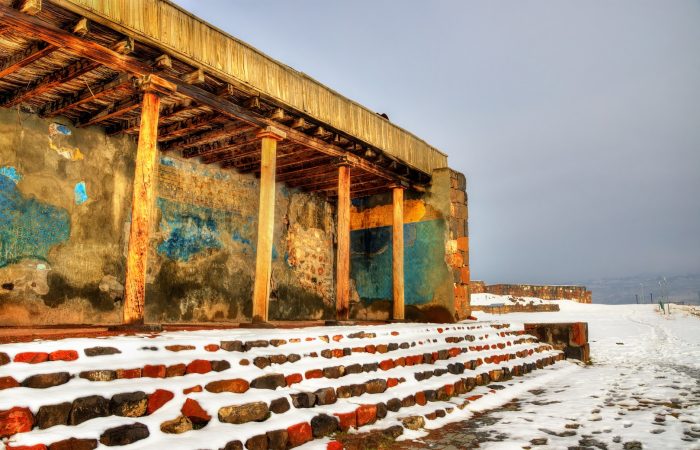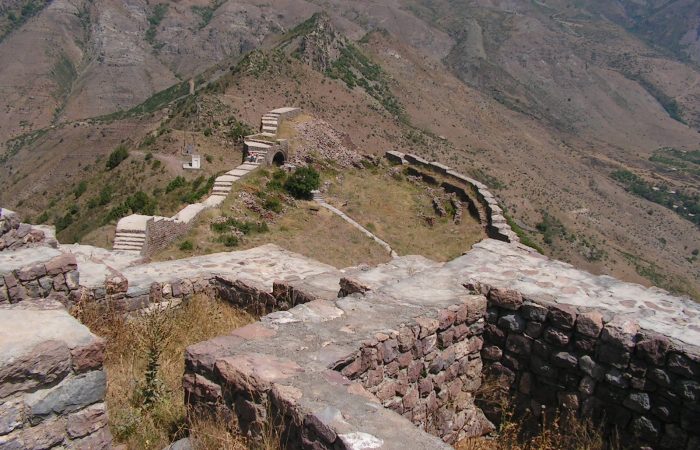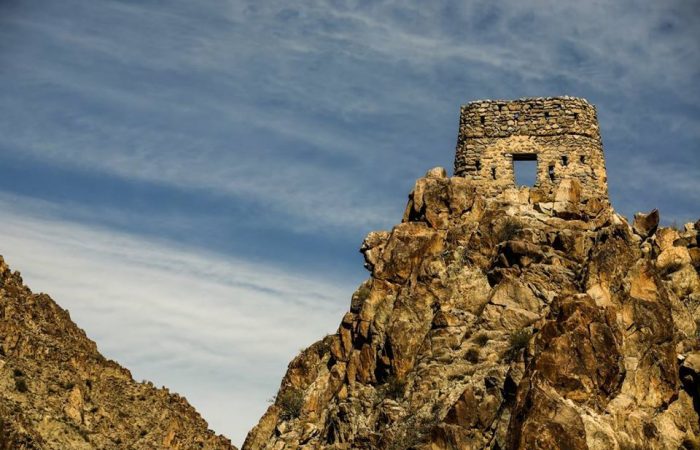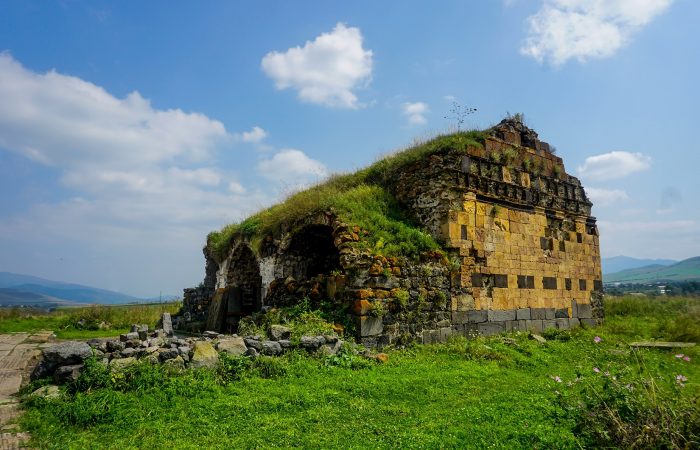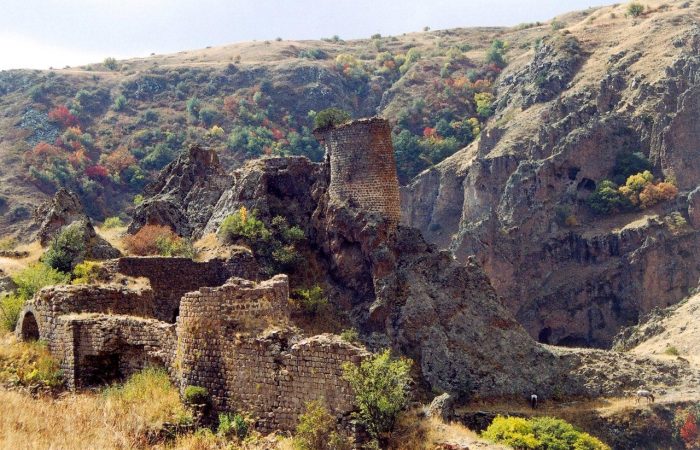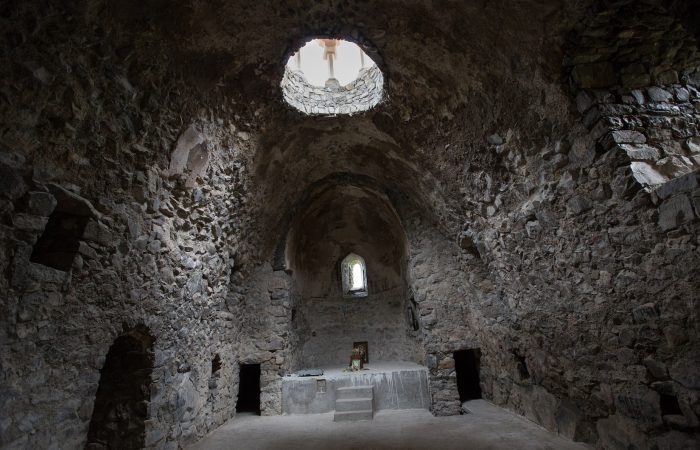Aghtsk: Location
Aghtsk is a historical-architectural monument located on the road to the city of Gyumri, not far from Ashtarak. The distance between Aghtsk and capital Yerevan is as much as 30 kilometers so visitors won’t have to spend long and weary hours on the road.
Aghtsk: General
Aghtsk represents a complex, which comprises a mausoleum dating to the middle of the 4th century and devoted to Arshakuni kings, and a 5th century basilica church. The latter was reconstructed in the 19th century.
Armenian 5th century historian Faustus of Byzantium (Pavstos Byuzand) who wrote the Armenian history in six volumes out of which the first two were not preserved states that the troops of Shapur II the Great, the ninth king of Persian Sassanid Empire from 309-379, captured Ani Kamakh (a fortress-city and a pagan center from which later the city of Ani is believed to have gotten its name) and ruined the graves of the Armenian kings buried there. According to the historian, they also captured the bones of Armenian Arshakuni kings and were unable to open only the mausoleum of King Sanatruk for this large sepulcher came with a rather firm and well-thought out structure. An attempt was made to take the captured bones of the Armenian Arshakuni kings to Persia in order to drive Armenians into desperation and weaken them. Nevertheless, in the middle of the fourth century sparapet (hereditary military rank) Vasak Mamikonyan defeated Persians in a battle and took away the stolen relics.
The relics were then buried in the sepulcher-church built in Aghtsk. It should be noted that the relics of the Christian and pagan kings were separated. Those belonging to Armenian pagan kings were buried in the underground floor of the mausoleum. The mausoleum remained standing until the 5th century, that is until the end of the reign of Arshakuni kings. It was ruined by a number of invasions as well as earthquakes.
As Armenian historian Moses of Khorene (Movses Khorenatsi) states a decision was made to take the relics of the Kings to Vagharshapat (Ejmiatsin) and to bury them there.
Aghtsk: Mausoleum of Arshakuni Kings
As you enter the mausoleum and go to the lower floor, you will see a small structure, which has niches to the north and to the south, while to the east there is a semi-circular apse. The niches are include two sepulchers where the relics of Arshakuni kings are interred. The sepulchers include carvings peculiar to pagan and early Christian eras.
On the right, to the southern part there is the image of biblical hero Daniel carved in the pit with the lions. There are also sculptures of rams that depict the hardships Armenia faced under the pressure of the Sassanids. On the left, to the northern part there are the carvings of miraculous mythical figures or gods – a calf among grape vines, a cross in a circle with two bird-carvings on the upper part and a hunter chasing a boar with two dogs.
Who were Arshakunis?
The dynasty of Arshakuni kings was the largest and they used to rule for around 400 years. It’s during their reign that Christianity was adopted in Armenia in 301. Back then Tiridates the Great was the king. Also, it’s then that the Armenian identity was formed and the struggle for liberty started.
The reign of Arshakuni kings was not devoid of divisions and inner struggles for the throne. Other than that, they used to constantly appear under the pressure of foreign powers, like Rome and Persia were.
It took another 400 years to have another powerful dynasty such as that of the Arshakunis to be established. It was the dynasty of Bagratunis.
The first Arshakuni king was Tiridates I, who ruled since 52 but officially he ruled from 66-68, and the last king of this large royal dynasty was Artashes III who ruled from 422-428. On the whole, there were 20 Arshakuni kings.






